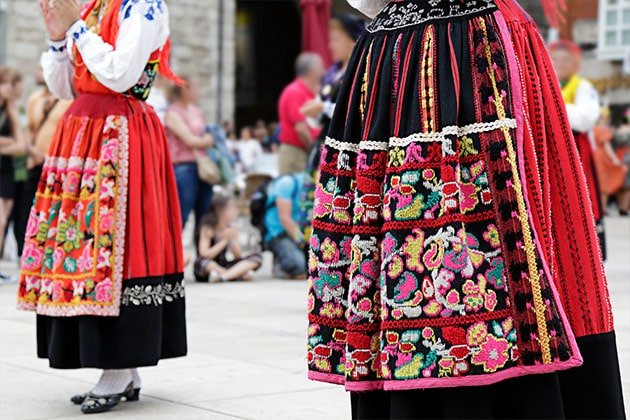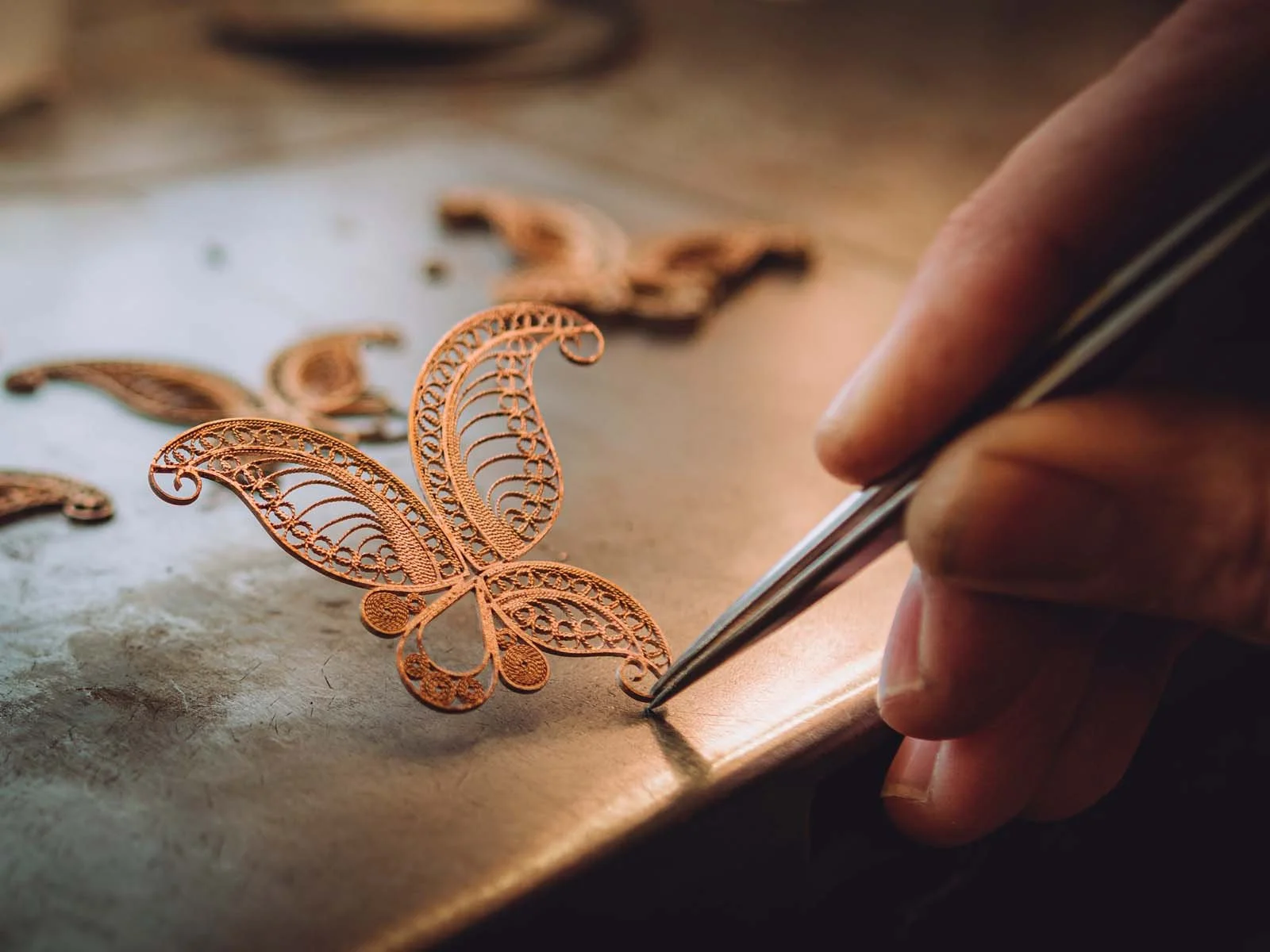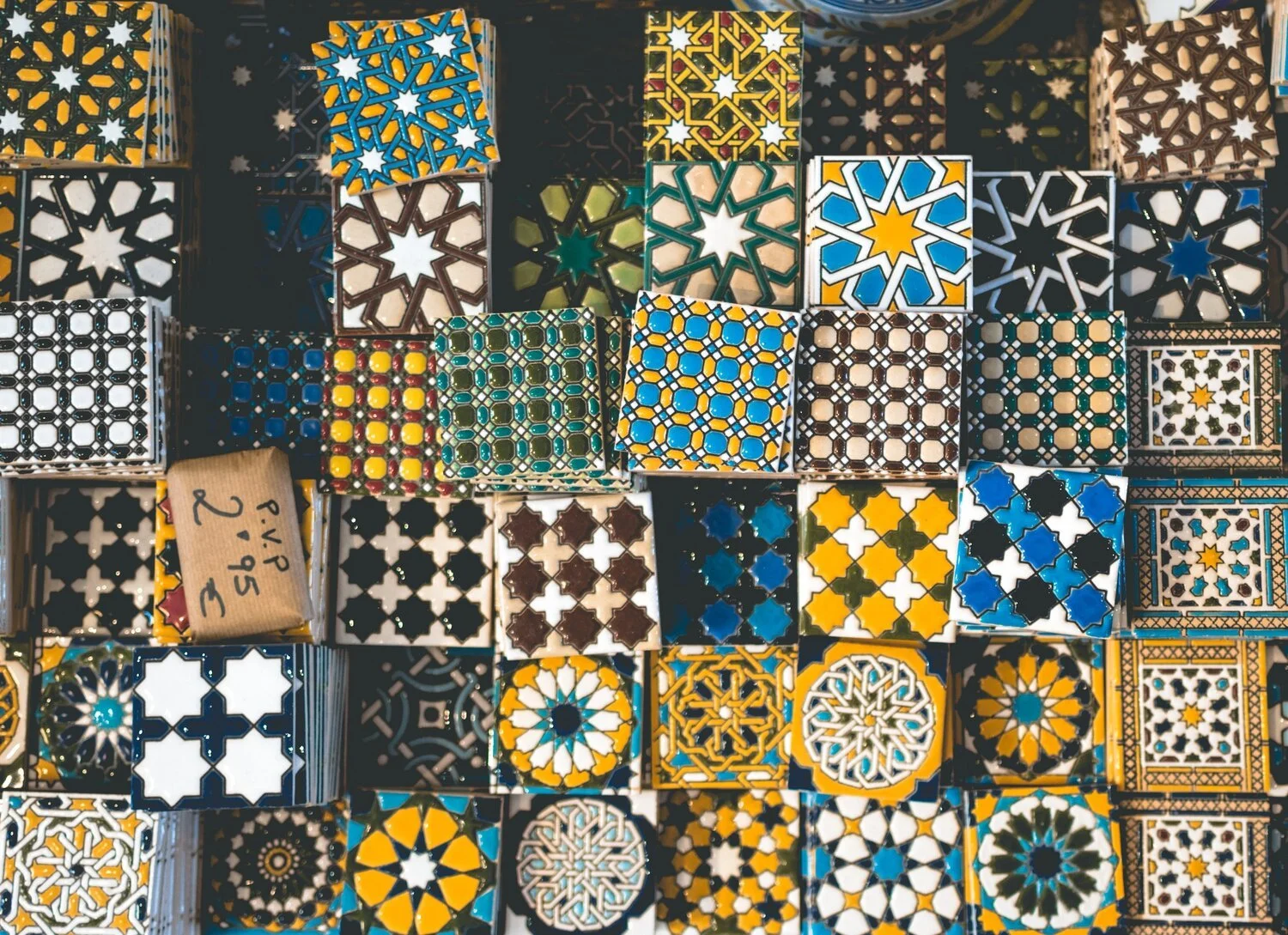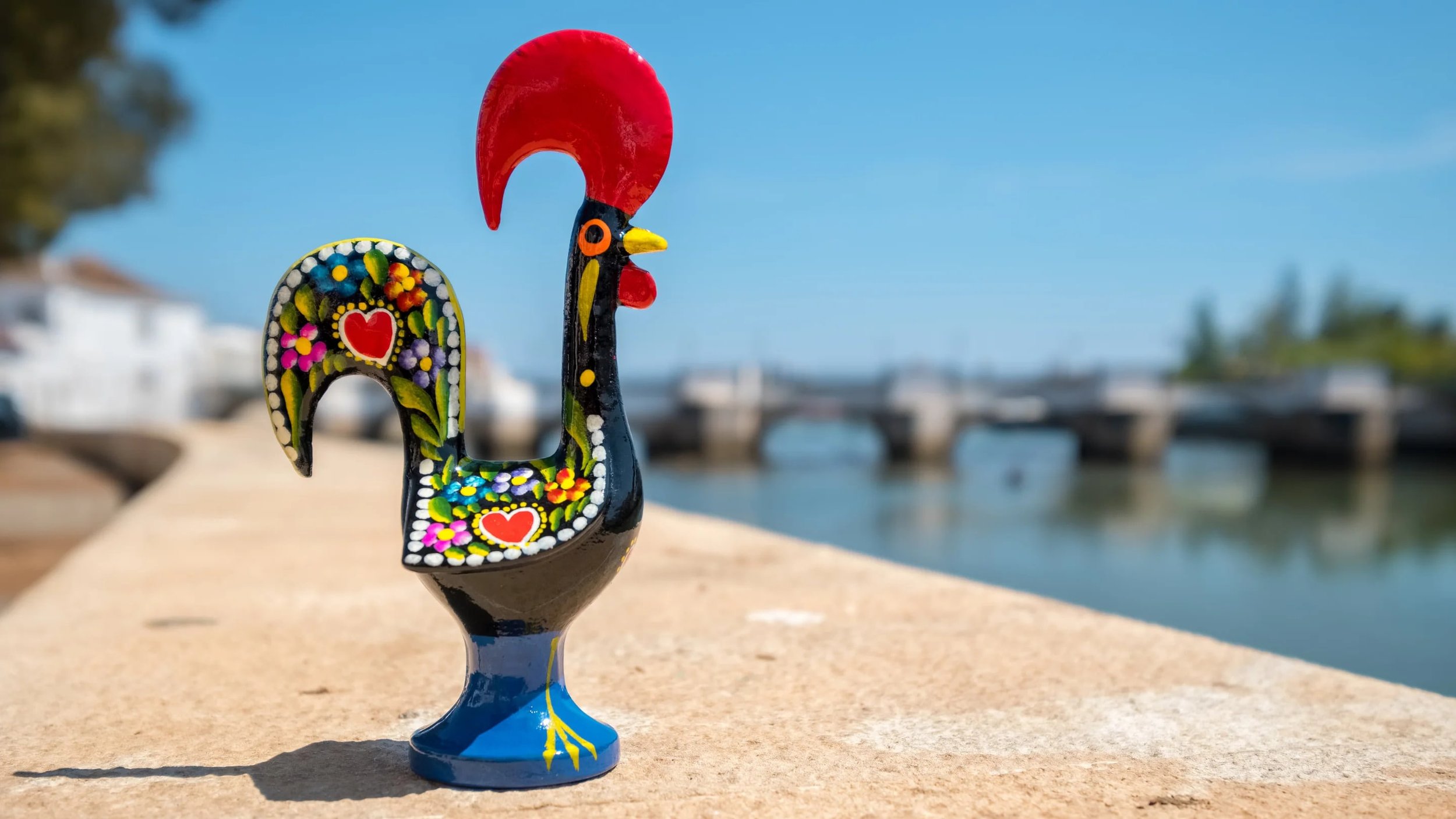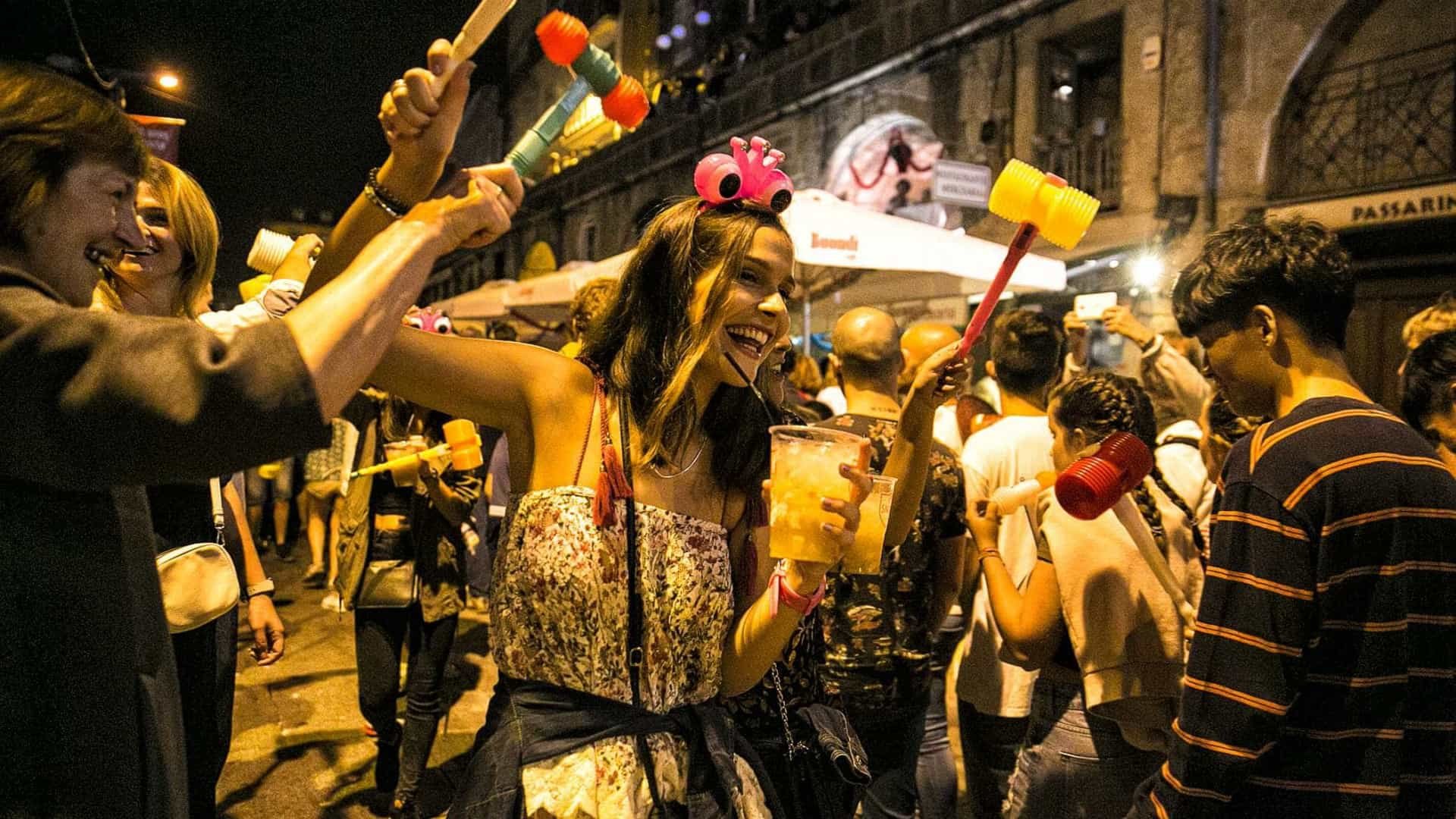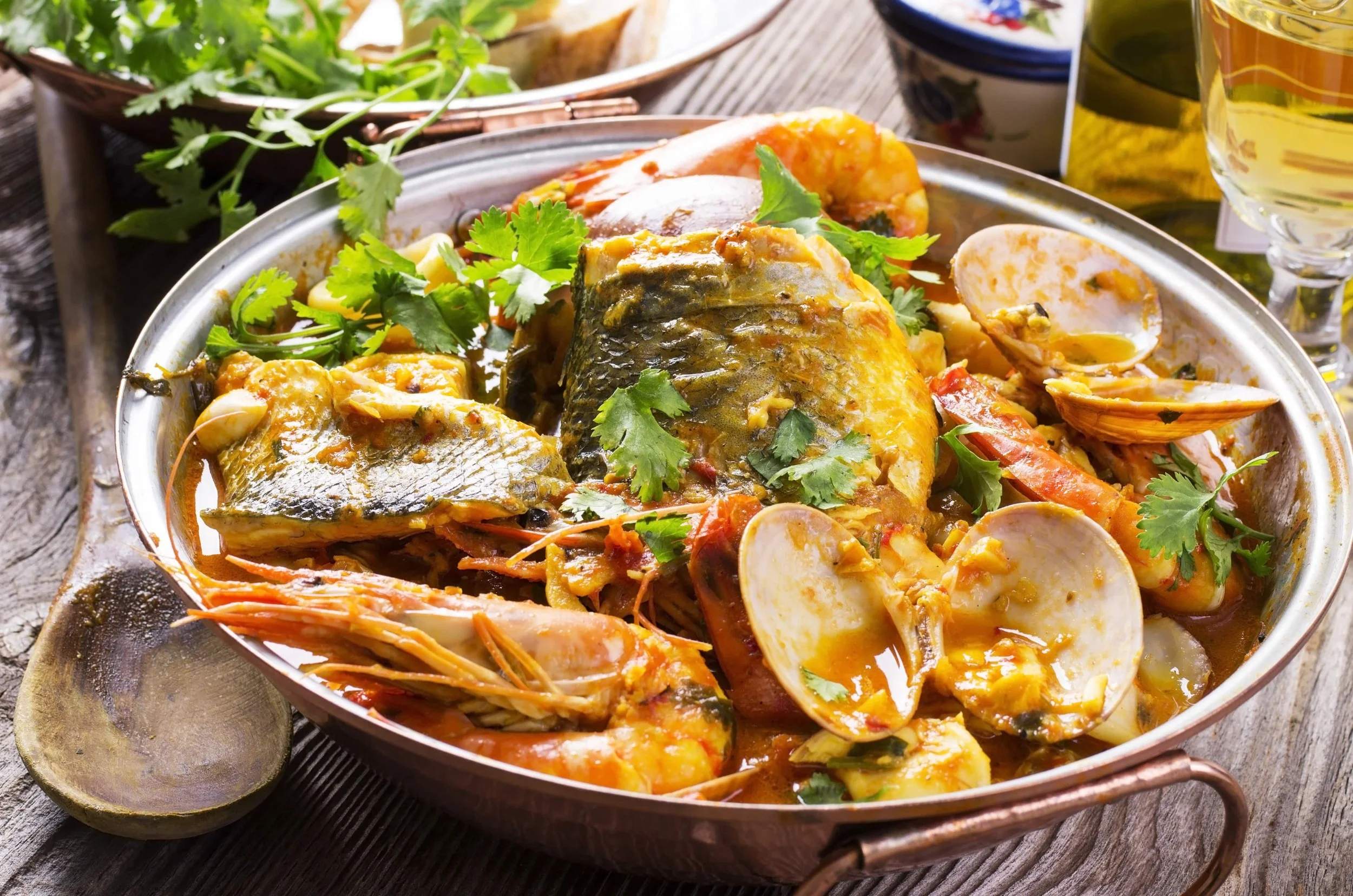12 Portuguese Traditions you Need to Know if you Want to Understand Portugal
12 Portuguese Traditions you Need to Know if you Want to Understand Portugal
Welcome to our comprehensive guide on Portuguese customs and traditions, where we take you on a captivating journey through the cultural landscape of Portugal.
There are a myriad of unique and fascinating Portuguese traditions and customs, deeply rooted in the country's rich history and culture, that have been passed down through generations, to create a country rich in culture and which are testament to the Portuguese people's love for their heritage and their commitment to preserving it.
This article delves into some of the most intriguing Portuguese traditions that you need to know if you want to truly understand Portugal, whether you are coming for a visit, or are moving here and want to integrate yourself into this fascinating culture.
Exploring the Rich Portuguese Customs and Traditions: Unveiling the Cultural Tapestry
As you embark on your quest to understand the vibrant local culture, it becomes essential to delve into the heart of this country and familiarize yourself with its captivating customs and traditions. From the distinctive dances that echo through the regions to the mesmerizing beauty of Portuguese tiles, we unveil the wonders that make Portugal truly unique. Join us as we traverse the rich heritage of Portugal.
1. Traditional Portuguese Dress: Threads of Heritage
Portugal has a long and fascinating rich history that has influenced its traditional clothing. Throughout the centuries, various civilizations and cultural exchanges have shaped the styles and designs of Portuguese attire. From the Moorish influence during the medieval period to the colonial encounters during the Age of Discoveries, each era has left its mark on the clothing traditions of the country.
One of the most remarkable aspects of Portuguese traditional clothing is its regional diversity. Each region of Portugal boasts its unique costumes and distinctive features, reflecting the local customs, Portuguese traditions, and climates. Let's explore some of the prominent regional costumes:
Minho
The Minho region in northern Portugal is known for its vibrant and colorful traditional attire. Women wear long skirts adorned with rich embroidery and lace, paired with tightly fitted bodices. The costumes are often accessorized with ornate jewelry and headpieces, adding a touch of elegance and splendor.
Alentejo
In the Alentejo region, the traditional clothing is characterized by simplicity and functionality. Men wear dark trousers with a loose shirt, often accompanied by a vest or jacket. Women don long skirts with flowery patterns and colorful aprons, showcasing the rural charm of the region.
Algarve
The Algarve region, located in the southern part of Portugal, exhibits a distinctive style of traditional clothing. Women wear bright and vividly colored skirts, featuring intricate patterns and embellishments. They complement their attire with delicate shawls and scarves, showcasing a blend of Moorish and Mediterranean influences.
Madeira and Azores
The islands of Madeira and Azores have their unique traditional clothing styles. Madeiran costumes often feature vibrant colors, delicate embroidery, and beautiful lacework. Azorean attire, on the other hand, incorporates elements of seafaring traditions, with sailors' capes and wide-brimmed hats being notable features.
2. Portuguese Wedding Traditions: Celebrating Love, Portuguese-Style
Portuguese wedding traditions are deeply rooted in the country's history and cultural heritage. Portugal has a rich history of maritime exploration and global influence, which has shaped its wedding customs over the centuries. These Portuguese traditions draw influences from a variety of sources, including Moorish, Roman Catholic, and rural traditions, resulting in a unique blend of rituals and cultural practices here.
Engagement
The path to a Portuguese wedding begins with the engagement. Traditionally, the groom-to-be visits the bride's family to seek their permission for the union. Once the proposal is accepted, the couple becomes officially engaged and starts preparing for the wedding festivities.
The Godparents
In Portuguese culture, godparents play an essential role in the wedding preparations. The couple selects two godparents, known as "padrinhos," who act as mentors and guides throughout the process. They provide support, advice, and often contribute financially to the wedding expenses.
The Bride's Attire
Portuguese brides typically wear a stunning white wedding gown, symbolizing purity and innocence. The dress is often accompanied by a lace veil and a crown or tiara, adding an elegant touch to the ensemble. Many brides also incorporate the traditional "lenço dos namorados" (sweetheart's handkerchief) embroidered with love symbols into their attire.
The Groom's Attire
The groom's attire is typically a classic black or dark-colored suit. However, in rural areas, traditional outfits are sometimes still worn. These include the "fato domingueiro" with black pants, a white shirt, a dark vest, and a hat. This attire reflects the cultural heritage and adds a touch of authenticity to the wedding celebration.
The Ceremony
Portuguese wedding ceremonies are usually held in a church, symbolizing the couple's commitment before God and the community. The ceremony incorporates Catholic traditions, including readings, prayers, and the exchange of vows. The couple is united in holy matrimony, and rings are exchanged as a symbol of their love and commitment.
The Arras
One of the unique aspects of Portuguese wedding ceremonies is the "arras" or wedding coins. The groom presents thirteen gold or silver coins to the bride, symbolizing his commitment to provide for their future. The coins are blessed by the priest and later kept as a cherished keepsake by the couple.
Traditional Portuguese Cuisine
Portuguese wedding receptions are renowned for their delectable cuisine. Guests are treated to a sumptuous feast that showcases the country's culinary delights. Traditional dishes such as bacalhau (salted cod), roasted piglet, and pastéis de nata (custard tarts) are often served.
Folk Dances and Music
Celebrations are incomplete without lively music and energetic dances. In Portuguese weddings, traditional folk dances like the "Vira" and the "Corridinho" take center stage. Guests join in these dances, creating an atmosphere of joy and celebration. Live bands or DJs often provide the music, ensuring that the dance floor is never empty.
Wedding Cake and Sweet Treats
The wedding cake holds a special place in Portuguese wedding traditions. Couples often choose a multi-tiered cake adorned with intricate designs and fresh flowers. Sweet treats, such as "bem-casados" (happily married), are also given to guests as a symbol of good luck and happiness.
3. Traditional Portuguese Jewellery: Delicate Artistry in Metal
Portuguese jewellery has a long and rich history that dates back centuries. It has been influenced by various civilizations, including the Moors, Romans, and Celts, as well as the exploration and trade routes of the Portuguese Empire. This blend of cultural influences has given rise to distinctive styles and designs that are truly emblematic of Portuguese jewellery.
Filigree: A Timeless Craft
At the heart of traditional Portuguese jewellery lies the art of filigree. Filigree is a delicate technique that involves meticulously shaping and intertwining thin metal wires to create intricate designs. This technique has been passed down through generations of skilled artisans and continues to be a hallmark of Portuguese jewellery craftsmanship.
Filigree holds a special place in Portuguese culture, symbolizing the country's heritage and craftsmanship. It is often associated with love, romance, and devotion, making it a popular choice for engagement rings, wedding bands, and other significant pieces of jewellery. The intricate patterns and meticulous details of filigree reflect the dedication and artistry of the craftsmen who create these stunning pieces.
Rainha
The Rainha style of Portuguese jewellery is characterized by its regal and ornate designs. It often features large, statement pieces adorned with gemstones, pearls, and filigree detailing. The Rainha style is associated with elegance and sophistication, making it a popular choice for special occasions and formal events.
Viana
The Viana style of Portuguese jewellery is inspired by the region of Minho and its traditional costumes. It showcases vibrant colors, floral motifs, and intricate filigree work. The Viana style is known for its distinctive heart-shaped pendants, which symbolize love and devotion. These pieces are often worn as a symbol of pride and cultural identity.
Portuguese Crosses
Portuguese crosses are iconic symbols of Portuguese religious devotion and craftsmanship. These crosses feature intricate filigree patterns of blue and white tiles are often embellished with gemstones or enamel. They are revered for their beauty and spiritual significance, and they are commonly worn as pendants or incorporated into rosaries.
Coração de Viana
The Coração de Viana, or the Viana Heart, is a beloved symbol in Portuguese jewellery. It represents love, fidelity, and commitment. The heart-shaped design is intricately crafted with filigree and often features colorful gemstones. The Coração de Viana is a cherished gift for special occasions, such as weddings and anniversaries.
4. Traditional Portuguese Music: Loss, Longing and Saudade
Diverse and rich, ranging from traditional Fado to modern pop and rock, Portugal has a vibrant music scene with numerous music festivals taking place throughout the year, however Portugal is synonymous with one type of music; soul-stirring, emotional, beautiful Fado music.
Fado Music
Fado, a genre of music deeply rooted in Portuguese culture, captures the hearts of listeners with its soul-stirring melodies and emotive storytelling. Originating in the streets and taverns of Lisbon, Fado has evolved into a symbol of Portuguese identity, reflecting the joys and sorrows of the human experience.
Fado emerged in the early 19th century in the neighborhoods of Lisbon, particularly in Alfama and Mouraria and was influenced by various musical styles, including African rhythms, Brazilian modinhas, and Moorish melodies. It originally served as a means of expression for sailors, prostitutes, and the marginalized members of society.
Characterized by its melancholic and nostalgic melodies, often accompanied by the distinctive sound of a Portuguese guitar, Fado conveys a sense of longing, loss, and longing for the past, reflecting the Portuguese concept of saudade, and Fado performances are deeply emotional, with singers pouring their hearts into the lyrics and melodies.
From its humble origins in the narrow streets of Lisbon to its international recognition, Fado has remained a timeless symbol of Portuguese culture. Immerse yourself in the evocative melodies, delve into the heartfelt lyrics, and experience the power of a Fado performance that transcends language and touches the depths of the human soul. Let the haunting strains of Fado transport you to a world of emotions, where saudade and storytelling intertwine, leaving an indelible mark on your heart.
5. Traditional Dances: A Reflection of Regional Soul
The allure of traditional dances in Portugal resonates throughout the country, each region boasting its own unique dance forms that celebrate its historical significance. From the northern realms to the southern landscapes, these regional, traditional dances form an integral part of the cultural identity of the Portuguese people.
Pauliteiros de Miranda
Among the most renowned traditional dances is the mesmerizing performance of the Pauliteiros de Miranda. Hailing from the Terras de Miranda, these eight men captivate audiences with their rhythmic movements accompanied by bagpipes, castanets, drums, and other traditional instruments. Clad in embroidered kilts, linen shirts, brown vests, leather boots, woolen socks, and hats, they dance gracefully with the aid of two sticks, known as palos.
Caretos de Podence
Another captivating dance form originates from the Northeast of Trás-os-Montes and Alto Douro region, performed by the Caretos de Podence. These intriguing characters trace their roots back to pre-Roman Celtic times. During the Carnival season, men adorn red, yellow, green, or black masks made of leather, wood, or tin, and dress in garishly colored fringed quilts. Adorned with a belt of cowbells around their waists, they create a mesmerizing soundscape that defines the Caretos dance.
Rich Tapestry of Dances
The dance heritage of Portugal expands far and wide, encompassing various captivating forms such as the Vira from the Minho region, Madeira's Bailinho, the Corridinho in the Algarve, the Fandango in the Ribatejo, the Vira from Nazaré, the Chula from the Douro, the Moda das Saias (a traditional dance found in several regions), the Bailarico Saloio, the Farrapeira, and the Tirana dances. Each dance carries its unique story, reflecting the cultural diversity that thrives within Portugal.
Wanna know more about Portugal and the Portuguese life? Thinking of moving to Portugal? Questions on visas? Healthcare? Expat life? Where you should live? Download our “Portugal Beckons - Book”, read by over 700 expats.
6. Portuguese Tiles: A Journey Through History
Portuguese tiles, locally known as azulejos, hold a significant place in the Portuguese architecture and artistic heritage. These distinctive blue and white tiles embellish the walls of important public buildings and monuments, depicting pivotal moments from Portugal's history. With roots dating back to the 16th century, when the influence of Flemish and Spanish workshops introduced them, Portuguese tiles have evolved into an art form uniquely their own.
A Landmark of Creativity
Portugal quickly mastered the art of tile-making and began creating its own masterpieces. These ceramic tiles, usually square in shape with one glazed side, measure approximately 15 by 15 centimeters. Over time, their utilization expanded beyond mere construction elements, and they became revered as decorative pieces, available in various sizes and patterns. Portuguese tiles continue to amaze with their intricate craftsmanship and vivid portrayal of historical events.
7. Barcelos Cockerels: Legends Unleashed
Steeped in legend and revered as an iconic symbol of Portugal, the Barcelos Cockerels captivate the imagination. According to ancient tales, a pilgrim en route to Santiago de Compostela was saved from an unjust hanging when a cockerel suddenly sang. This miraculous event gave birth to the Barcelos Cockerel tradition, a symbol that represents the region and has come to embody the spirit of the entire country.
A Symbolic Presence:
Crafted from clay, the Barcelos Cockerels showcase the intricate craftsmanship of the region. They have transcended their humble origins to become an enduring emblem of Portugal, widely celebrated for their vibrant colors and captivating designs. Whether adorning shelves, mantelpieces, or the walls of homes, these legendary cockerels evoke a sense of national pride and cultural significance.
8. Portuguese Handicraft: Weaving Tales of Artistry
Portuguese handicraft is a testament to the artistic prowess and cultural richness that abounds in rural regions. Each area has its own unique art forms, passed down through generations and interwoven with oral traditions. From the exquisite Arraiolos carpets to the delicate art of filigree, Portuguese handicraft encompasses a diverse range of artistic expressions.
Arraiolos Carpets
Originating before the 17th century, Arraiolos carpets captivate with their time-honored tradition. Meticulously crafted using a traditional stitch known as "ponto de Arraiolos," these carpets showcase intricate patterns and vibrant colors that reflect the region's artistic heritage. Each traditional stitch also tells a story, preserving the rich cultural tapestry for generations to come.
Filigree: A Marvel of Metalwork
Nestled in the northern region of Portugal, the tradition of filigree mesmerizes with its delicate beauty. Intricate threads of fine metal and beads intertwine, creating exquisite pieces of jewelry. The art of filigree demands exceptional skill and precision, resulting in stunning adornments that reflect the heritage and artistry of Portugal.
Diverse Artistic Expressions
Portugal's artistic landscape encompasses much more than carpet making and filigree. The nation's mastery extends to ceramics, lacework, and embroidery, each art form carrying its unique regional flair. These crafts embody the essence of Portuguese culture, showcasing the boundless creativity and artistic finesse that make them truly exceptional.
9. Conventual Sweets: Indulging in Time-Honored Delicacies
Portugal's conventual sweets form an integral part of the nation's culinary heritage, dating back centuries. It is said that monks and nuns created most of these delectable treats, utilizing surplus sugar and egg yolks available in the convents. Almonds, dry fruits, and nuts find their way into these exquisite delicacies, resulting in a wide array of flavors that tantalize the taste buds beyond just the famous and revered pastel de nata, and the Portuguese are not fussy about when they indulge in these treats, commonly eating the sweet treats for breakfast.
A Testament to Culinary Artistry
Conventual sweets offer a tantalizing glimpse into gastronomic Portuguese traditions. Among the most beloved treats are the Pastéis de nata, Pastel de Santa Clara, Papo de Anjo, and Toucinho do Céu. These delights showcase the ingenuity and creativity of Portuguese culinary artisans, resulting in confections that delight locals and visitors alike.
10. Portuguese Festivals and Events: Celebrating Tradition
Portugal is a land of vibrant festivals and sacred pilgrimages, providing a glimpse into the deep-rooted religious traditions that shape the nation's cultural fabric.
From big events in the cities like the Feast of Saint Anthony in Lisbon and the festivities honoring St. John the Baptist in Porto, to the smaller parties and celebrations in almost every small village in Portugal, these celebrations bring communities together, fostering a sense of unity and shared heritage.
Feast of Saint Anthony
Born in Lisbon during the late 12th century, Saint Anthony, the Roman Catholic patron saint of lost things, holds a special place in the hearts of the Portuguese people. During the month of June, the city comes alive with festivities, as people take to the streets to dance and revel in the joyous atmosphere. Grilled sardines, wine, and sangria are savored as traditional parades captivate onlookers.
Festa de São João do Porto
Porto, Braga, and Vila do Conde embrace the feast day - which dates back to the 14th century - of St. John the Baptist with fervor and exuberance.
On the evening of June 23rd, the cities are ablaze with celebrations, featuring captivating parades, sardine barbecues, lively street parties, dance performances, and the tradition of hitting each other on the head with soft plastic hammers. The night ends with a spectacular fireworks display over the Douro River. These events provide a glimpse into the rich religious heritage of Portugal, while also offering a joyous and unforgettable experience for locals and visitors alike.
The Burning of the Ribbons
The Burning of the Ribbons or 'Queima das Fitas' is a traditional university student celebration that takes place in Coimbra, home to one of the oldest universities in the world. The week-long festivities mark the end of the academic year and include parades, concerts, and the symbolic burning of ribbons representing different faculties.
Holy Week in Braga
Holy Week or 'Semana Santa' in Braga is one of the most significant religious events in Portugal. The week is filled with processions, ceremonies, and other religious activities that attract both locals and tourists. The most notable event is the procession of the 'Ecce Homo', where participants dress in traditional biblical costumes.
Sardine Festival
The Sardine Festival or 'Festa da Sardinha' in Portimão is a celebration of one of Portugal's most beloved dishes - grilled sardines. The festival, which takes place in August, features sardine grilling competitions, live music, and plenty of delicious food.
11. Portuguese Cuisine: A Gastronomic Tapestry
Portugal's culinary landscape is a tapestry of flavors and influences, shaped by centuries of historical and cultural exchanges. With its Mediterranean and Eastern influences, Portuguese cuisine tantalizes the taste buds with its diverse array of dishes, showcasing the bounties of the sea, the richness of the land, and the vibrant colors of fresh produce.
Seafood Delights
With a long coastline that stretches along the Atlantic Ocean, Portugal boasts an abundance of fresh seafood. From succulent grilled sardines to exquisite bacalhau (salted cod) dishes, seafood takes center stage in Portuguese cuisine. The traditional Cataplana de Marisco, a flavorful seafood stew, and the iconic Caldeirada de Peixe, a fisherman's stew, are just a glimpse into the culinary treasures that await.
Meaty Delicacies
Inland regions offer an array of savory meat dishes that exemplify Portuguese gastronomy. Tender cuts of beef, succulent lamb, and flavorful pork form the foundation of hearty and traditional dishes such as Cozido à Portuguesa, Feijoada, and Leitão Assado. These dishes showcase the Portuguese dedication to quality ingredients and the art of slow cooking, resulting in unparalleled flavors.
Vegetable Delights
Fresh vegetables play a vital role in Portuguese cuisine, enriching dishes with their vibrant colors and flavors. From hearty soups like Caldo Verde to the iconic vegetable-based dish, Açorda, the Portuguese embrace the natural bounty of the land. These dishes not only showcase the nation's commitment to a balanced diet but also pay homage to the agricultural traditions that have sustained communities for generations.
12. Port Wine: A Nectar of the Douro
No exploration of Portuguese customs and traditions would be complete without a toast to the world-famous Port wine. Produced in the picturesque Douro Demarcated Region, this fortified liqueur wine has captivated palates around the globe, enticing connoisseurs with its distinctive sweetness and robust character.
A Time-Honored Tradition
Port wine sets itself apart through a unique fermentation process. The fermentation is interrupted shortly after it begins by the addition of natural grape spirit, resulting in a fortified wine with heightened sweetness and richness. Stored in the cellars of Vila Nova de Gaia, Port wine owes its name to the city of Porto, from where it embarked on a global journey, delighting wine enthusiasts worldwide.
Conclusion
As you embark on your journey to unravel the wonders of Portugal, immersing yourself in the vibrant customs and traditions is key to understanding the nation's rich cultural tapestry. From the rhythmic dances that echo through the regions to the exquisite craftsmanship of Portuguese tiles, each facet of the country's heritage offers a glimpse into the soul of Portugal. Through the lens of traditional songs and dances, captivating art forms, delectable sweets, and spirited celebrations, we have endeavored to present a comprehensive guide that will enhance your exploration and appreciation of the captivating customs and traditions that define Portugal. So embrace the spirit of discovery, indulge in the flavors, and immerse yourself in the beauty of the culture of Portugal as you uncover the wonders of this enchanting nation.
Wanna know more about Portugal and the Portuguese life? Thinking of moving to Portugal? Questions on visas? Healthcare? Expat life? Where you should live? Download our “Portugal Beckons - Book”, read by over 700 expats.
Frequently Asked Questions
What are the traditions in Portugal?
Portugal is rich in traditions, many of which are tied to religious festivals and events. These include the Festa de São João do Porto, the Burning of the Ribbons in Coimbra, and Holy Week in Braga. Other traditions include Fado, folk music, traditional Portuguese dress, and the Sardine Festival in Portimão.
What is the Portuguese Culture known for?
Portuguese culture is known for its rich history, traditional music (like Fado), unique festivals, delicious cuisine, and distinctive traditional dress. Portugal is also famous for its wines and traditional liquors.
What do Portuguese people celebrate?
Portuguese people celebrate a variety of events and festivals throughout the year, dominated by the Catholic calendar, which includes religious events like Holy Week, the Festa de São João do Porto, and of course, Christmas. Cultural celebrations like the Burning of the Ribbons and the Sardine Festival are also popular.
What is the biggest celebration in Portugal?
One of the biggest celebrations in Portugal is the Festa de São João do Porto, a lively street festival that takes place every year on the night of June 23rd. The festival, which dates back to the 14th century, features street concerts, dance performances, and a spectacular fireworks display.
How do Portuguese greet each other?
Portuguese people typically greet each other with a handshake. Close friends and family members may greet each other with a kiss on both cheeks, starting with the right. It's also common to say "hello" ("olá") or "good day" ("bom dia" in the morning, "boa tarde" in the afternoon).


